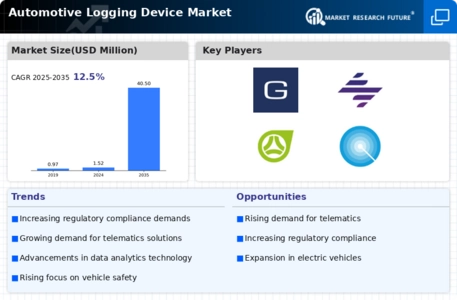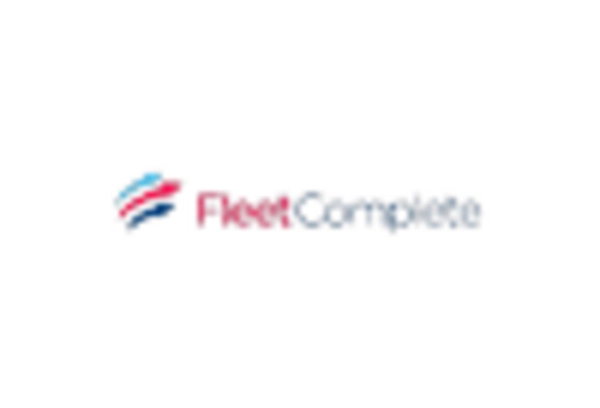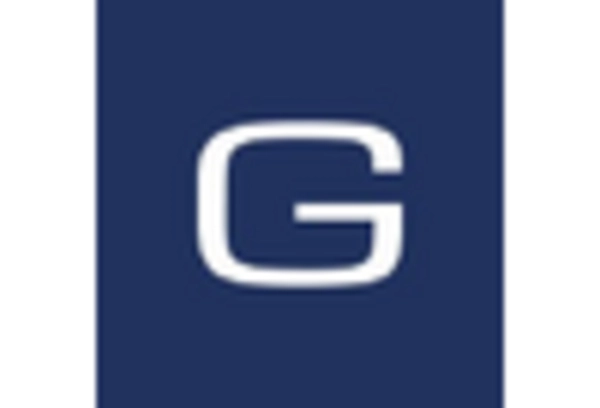-
EXECUTIVE SUMMARY
-
MARKET INTRODUCTION
-
Market Definition
-
Scope of the Study
- Research Objectives
- Assumptions & Limitations
-
Market Structure
-
MARKET
-
RESEARCH METHODOLOGY
-
Research Process
-
Secondary Research
-
Primary Research
-
Forecast Model
-
MARKET LANDSCAPE
-
Supply Chain Analysis
-
Porter’s Five Forces Analysis
- Bargaining Power of Buyers
- Bargaining
- Threat of Substitutes
- Internal Rivalry
-
Threat of New Entrants
-
Power of Suppliers
-
Impact of COVID-19 on Global Automotive Logging Device Market
- Impact on Raw Material Availability
- Others
-
Impact on Production
-
Impact on Pricing
-
MARKET DYNAMICS OF THE GLOBAL AUTOMOTIVE
-
LOGGING DEVICE MARKET
-
Introduction
-
Drivers
-
Restraints
-
Opportunities
-
Challenges
-
GLOBAL AUTOMOTIVE LOGGING DEVICE
-
MARKET, BY SERVICE TYPE
-
Introduction
-
Entry Level
- Market Estimates & Forecast,
-
Market Estimates & Forecast, 2023-2032
-
by Region, 2023-2032
-
Intermediate
- Market Estimates & Forecast,
- Market Estimates & Forecast, by Region, 2023-2032
- Market Estimates & Forecast, 2023-2032
- Market
-
High Level
-
Estimates & Forecast, by Region, 2023-2032
-
GLOBAL AUTOMOTIVE LOGGING
-
DEVICE MARKET, BY VEHICLE TYPE
-
Introduction
-
LCVs
- Market Estimates & Forecast,
-
Market Estimates & Forecast, 2023-2032
-
by Region, 2023-2032
-
Trucks
- Market Estimates & Forecast,
- Market Estimates & Forecast, by Region, 2023-2032
- Market Estimates & Forecast, 2023-2032
- Market
-
Buses
-
Estimates & Forecast, by Region, 2023-2032
-
Cars
- Market
- Market Estimates & Forecast,
-
Estimates & Forecast, 2023-2032
-
by Region, 2023-2032
-
GLOBAL AUTOMOTIVE LOGGING DEVICE MARKET, BY COMPONENT
-
Introduction
-
Display
- Market Estimates & Forecast,
- Market Estimates & Forecast, by Region, 2023-2032
- Market Estimates & Forecast, 2023-2032
-
Telematics Unit
-
Market Estimates & Forecast, by Region, 2023-2032
-
Others
- Market Estimates & Forecast,
-
Market Estimates & Forecast, 2023-2032
-
by Region, 2023-2032
-
GLOBAL AUTOMOTIVE LOGGING DEVICE MARKET, BY FORM FACTOR
-
Introduction
-
Integrated
- Market Estimates & Forecast,
- Market Estimates & Forecast, by Region, 2023-2032
- Market Estimates & Forecast, 2023-2032
- Market
-
Embedded
-
Estimates & Forecast, by Region, 2023-2032
-
GLOBAL AUTOMOTIVE LOGGING
-
DEVICE MARKET, BY REGION
-
Introduction
-
North America
- Market Estimates & Forecast,
- Market Estimates & Forecast, by Vehicle
- Market Estimates & Forecast, by Form Factor, 2023-2032
- Market Estimates & Forecast, by Component, 2023-2032
-
Market Estimates & Forecast, 2023-2032
-
by Service Type, 2023-2032
-
Type, 2023-2032
-
Market Estimates & Forecast, by Country, 2023-2032
-
US
-
Market Estimates & Forecast, by Service Type, 2023-2032
-
Estimates & Forecast, by Vehicle Type, 2023-2032
-
& Forecast, by Form Factor, 2023-2032
-
Forecast, by Component, 2023-2032
-
& Forecast, by Service Type, 2023-2032
-
Forecast, by Vehicle Type, 2023-2032
-
by Form Factor, 2023-2032
-
Service Type, 2023-2032
-
Type, 2023-2032
-
Market
-
Market Estimates
-
Market Estimates &
-
Canada
-
Market Estimates
-
Market Estimates &
-
Market Estimates & Forecast,
-
Market Estimates & Forecast, by Component,
-
Mexico
-
Market Estimates & Forecast, by
-
Market Estimates & Forecast, by Vehicle
-
Market Estimates & Forecast, by Form Factor,
-
Market Estimates & Forecast, by Component, 2023-2032
-
Europe
- Market Estimates & Forecast, 2023-2032
-
Market Estimates & Forecast, by Service Type, 2023-2032
-
Estimates & Forecast, by Vehicle Type, 2023-2032
-
& Forecast, by Form Factor, 2023-2032
-
by Component, 2023-2032
-
Service Type, 2023-2032
-
Type, 2023-2032
-
Market
-
Market Estimates
-
Market Estimates & Forecast,
-
Market Estimates & Forecast, by Country,
-
Germany
-
Market Estimates & Forecast, by
-
Market Estimates & Forecast, by Vehicle
-
Market Estimates & Forecast, by Form Factor,
-
Market Estimates & Forecast, by Component, 2023-2032
-
UK
-
Market Estimates & Forecast, by Service Type, 2023-2032
-
Market Estimates & Forecast, by Vehicle Type, 2023-2032
-
Market Estimates & Forecast, by Form Factor, 2023-2032
-
Estimates & Forecast, by Component, 2023-2032
-
Market
-
France
-
Market Estimates & Forecast, by Service Type, 2023-2032
-
Estimates & Forecast, by Vehicle Type, 2023-2032
-
& Forecast, by Form Factor, 2023-2032
-
Forecast, by Component, 2023-2032
-
& Forecast, by Service Type, 2023-2032
-
Forecast, by Vehicle Type, 2023-2032
-
by Form Factor, 2023-2032
-
Service Type, 2023-2032
-
Type, 2023-2032
-
Type, 2023-2032
-
Asia-Pacific
-
Market
-
Market Estimates
-
Market Estimates &
-
Spain
-
Market Estimates
-
Market Estimates &
-
Market Estimates & Forecast,
-
Market Estimates & Forecast, by Component,
-
Italy
-
Market Estimates & Forecast, by
-
Market Estimates & Forecast, by Vehicle
-
Market Estimates & Forecast, by Form Factor,
-
Market Estimates & Forecast, by Component, 2023-2032
-
Rest of Europe
-
Market Estimates & Forecast, by Service
-
Market Estimates & Forecast, by Vehicle Type,
-
Market Estimates & Forecast, by Form Factor, 2023-2032
-
Market Estimates & Forecast, by Component, 2023-2032
-
Market Estimates & Forecast, 2023-2032
-
Market Estimates & Forecast, by Service Type, 2023-2032
-
Estimates & Forecast, by Vehicle Type, 2023-2032
-
& Forecast, by Form Factor, 2023-2032
-
by Component, 2023-2032
-
Service Type, 2023-2032
-
Type, 2023-2032
-
Market
-
Market Estimates
-
Market Estimates & Forecast,
-
Market Estimates & Forecast, by Country,
-
China
-
Market Estimates & Forecast, by
-
Market Estimates & Forecast, by Vehicle
-
Market Estimates & Forecast, by Form Factor,
-
Market Estimates & Forecast, by Component, 2023-2032
-
Japan
-
Market Estimates & Forecast, by Service Type,
-
Market Estimates & Forecast, by Vehicle Type, 2023-2032
-
Market Estimates & Forecast, by Form Factor, 2023-2032
-
Market Estimates & Forecast, by Component, 2023-2032
-
India
-
Market Estimates & Forecast, by Service Type, 2023-2032
-
Estimates & Forecast, by Vehicle Type, 2023-2032
-
& Forecast, by Form Factor, 2023-2032
-
Forecast, by Component, 2023-2032
-
Market
-
Market Estimates
-
Market Estimates &
-
Australia & New Zealand
-
Market Estimates & Forecast, by Service Type, 2023-2032
-
Estimates & Forecast, by Vehicle Type, 2023-2032
-
& Forecast, by Form Factor, 2023-2032
-
Forecast, by Component, 2023-2032
-
Market
-
Market Estimates
-
Market Estimates &
-
Rest of Asia-Pacific
-
Market Estimates & Forecast, by Service Type, 2023-2032
-
Estimates & Forecast, by Vehicle Type, 2023-2032
-
& Forecast, by Form Factor, 2023-2032
-
Forecast, by Component, 2023-2032
-
Estimates & Forecast, 2023-2032
-
by Service Type, 2023-2032
-
Type, 2023-2032
-
Market
-
Market Estimates
-
Market Estimates &
-
Rest of the World
- Market
- Market Estimates & Forecast,
- Market Estimates & Forecast, by Vehicle
- Market Estimates & Forecast, by Form Factor, 2023-2032
- Market Estimates & Forecast, by Component, 2023-2032
-
Market Estimates & Forecast, by Region, 2023-2032
-
South America
-
Market Estimates & Forecast, by Service Type, 2023-2032
-
Market Estimates & Forecast, by Vehicle Type, 2023-2032
-
Estimates & Forecast, by Form Factor, 2023-2032
-
& Forecast, by Component, 2023-2032
-
Market
-
Market Estimates
-
Middle East
-
Market Estimates & Forecast, by Service Type, 2023-2032
-
Estimates & Forecast, by Vehicle Type, 2023-2032
-
& Forecast, by Form Factor, 2023-2032
-
Forecast, by Component, 2023-2032
-
& Forecast, by Service Type, 2023-2032
-
Forecast, by Vehicle Type, 2023-2032
-
by Form Factor, 2023-2032
-
Market
-
Market Estimates
-
Market Estimates &
-
Africa
-
Market Estimates
-
Market Estimates &
-
Market Estimates & Forecast,
-
Market Estimates & Forecast, by Component,
-
COMPETITIVE LANDSCAPE
-
Introduction
-
Market
-
Strategy
-
Key Development Analysis
-
(Expansions/Mergers & Acquisitions/Joint
-
Ventures/New Service Developments/Agreements/Investments)
-
COMPANY PROFILES
-
AT&T Business
- Company Overview
- Financial Updates
- Business Segment Overview
- Strategies
- Key Developments
- SWOT Analysis
-
Blue Tree System
- Company Overview
- Financial Updates
- Business Segment Overview
- Key Developments
- SWOT Analysis
-
Strategies
-
Coretex
- Company Overview
- Financial Updates
- Business
- Strategies
- Key Developments
-
Segment Overview
-
SWOT Analysis
-
DriverTech
- Company Overview
- Financial
- Business Segment Overview
- Strategies
- SWOT Analysis
-
Updates
-
Key Developments
-
ELD Solutions
- Financial Updates
- Business Segment Overview
- Strategies
- Key Developments
- SWOT Analysis
-
Company Overview
-
Garmin International
- Company Overview
- Financial
- Business Segment Overview
- Strategies
- SWOT Analysis
-
Updates
-
Key Developments
-
Omnitracs LLC
- Financial Updates
- Business Segment Overview
- Strategies
- Key Developments
- SWOT Analysis
-
Company Overview
-
Teletrac Navman
- Company Overview
- Financial Updates
- Business Segment Overview
- Strategies
- Key Developments
- SWOT Analysis
-
Zonar Systems
- Company Overview
- Financial Updates
- Business Segment Overview
- Key Developments
- SWOT Analysis
- Company Overview
- Financial Updates
- Strategies
- Key Developments
- SWOT Analysis
-
Strategies
-
Geotab Inc
-
Business Segment Overview
-
CONCLUSION
-
LIST OF TABLES
-
Global Automotive Logging Device Market, by Region, 2023-2032 (USD Million)
-
Global Automotive Logging Device Market, by Service Type, 2023-2032 (USD
-
Million)
-
Global Automotive Logging Device Market, by Vehicle Type,
-
Global Automotive Logging Device Market, by
-
Form Factor, 2023-2032 (USD Million)
-
Global Automotive Logging Device
-
Market, by Component, 2023-2032 (USD Million)
-
North America: Automotive
-
Logging Device Market, by Country, 2023-2032 (USD Million)
-
North America:
-
Automotive Logging Device Market, by Service Type, 2023-2032 (USD Million)
-
TABLE
-
North America: Automotive Logging Device Market, by Vehicle Type, 2023-2032 (USD
-
Million)
-
North America: Automotive Logging Device Market, by Form Factor,
-
North America: Automotive Logging Device Market,
-
by Component, 2023-2032 (USD Million)
-
US: Automotive Logging Device
-
Market, by Service Type, 2023-2032 (USD Million)
-
US: Automotive Logging
-
Device Market, by Vehicle Type, 2023-2032 (USD Million)
-
US: Automotive
-
Logging Device Market, by Form Factor, 2023-2032 (USD Million)
-
US:
-
Automotive Logging Device Market, by Component, 2023-2032 (USD Million)
-
TABLE
-
Canada: Automotive Logging Device Market, by Service Type, 2023-2032 (USD Million)
-
Canada: Automotive Logging Device Market, by Vehicle Type, 2023-2032
-
(USD Million)
-
Canada: Automotive Logging Device Market, by Form Factor,
-
Canada: Automotive Logging Device Market,
-
by Component, 2023-2032 (USD Million)
-
Mexico: Automotive Logging Device
-
Market, by Service Type, 2023-2032 (USD Million)
-
Mexico: Automotive
-
Logging Device Market, by Vehicle Type, 2023-2032 (USD Million)
-
Mexico:
-
Automotive Logging Device Market, by Form Factor, 2023-2032 (USD Million)
-
TABLE
-
Mexico: Automotive Logging Device Market, by Component, 2023-2032 (USD Million)
-
Mexico: Automotive Logging Device Market, by Component, 2023-2032 (USD
-
Million)
-
Europe: Automotive Logging Device Market, by Country, 2023-2032
-
(USD Million)
-
Europe: Automotive Logging Device Market, by Service
-
Type, 2023-2032 (USD Million)
-
Europe: Automotive Logging Device Market,
-
by Vehicle Type, 2023-2032 (USD Million)
-
Europe: Automotive Logging
-
Device Market, by Form Factor, 2023-2032 (USD Million)
-
Europe: Automotive
-
Logging Device Market, by Component, 2023-2032 (USD Million)
-
Germany:
-
Automotive Logging Device Market, by Service Type, 2023-2032 (USD Million)
-
TABLE
-
Germany: Automotive Logging Device Market, by Vehicle Type, 2023-2032 (USD Million)
-
Germany: Automotive Logging Device Market, by Form Factor, 2023-2032
-
(USD Million)
-
Germany: Automotive Logging Device Market, by Component,
-
France: Automotive Logging Device Market,
-
by Service Type, 2023-2032 (USD Million)
-
France: Automotive Logging
-
Device Market, by Vehicle Type, 2023-2032 (USD Million)
-
France: Automotive
-
Logging Device Market, by Form Factor, 2023-2032 (USD Million)
-
France:
-
Automotive Logging Device Market, by Component, 2023-2032 (USD Million)
-
TABLE
-
Italy: Automotive Logging Device Market, by Service Type, 2023-2032 (USD Million)
-
Italy: Automotive Logging Device Market, by Vehicle Type, 2023-2032 (USD
-
Million)\
-
Italy: Automotive Logging Device Market, by Form Factor,
-
Italy: Automotive Logging Device Market, by
-
Component, 2023-2032 (USD Million)
-
Spain: Automotive Logging Device
-
Market, by Service Type, 2023-2032 (USD Million)
-
Spain: Automotive
-
Logging Device Market, by Vehicle Type, 2023-2032 (USD Million)
-
Spain:
-
Automotive Logging Device Market, by Form Factor, 2023-2032 (USD Million)
-
TABLE
-
Spain: Automotive Logging Device Market, by Component, 2023-2032 (USD Million)
-
UK: Automotive Logging Device Market, by Service Type, 2023-2032 (USD
-
Million)
-
UK: Automotive Logging Device Market, by Vehicle Type, 2023-2032
-
(USD Million)
-
UK: Automotive Logging Device Market, by Form Factor,
-
UK: Automotive Logging Device Market, by Component,
-
Rest of Europe: Automotive Logging Device
-
Market, by Service Type, 2023-2032 (USD Million)
-
Rest of Europe: Automotive
-
Logging Device Market, by Vehicle Type, 2023-2032 (USD Million)
-
Rest
-
of Europe: Automotive Logging Device Market, by Form Factor, 2023-2032 (USD Million)
-
Rest of Europe: Automotive Logging Device Market, by Component, 2023-2032
-
(USD Million)
-
Asia-Pacific: Automotive Logging Device Market, by Country,
-
Asia-Pacific: Automotive Logging Device Market,
-
by Service Type, 2023-2032 (USD Million)
-
Asia-Pacific: Automotive
-
Logging Device Market, by Vehicle Type, 2023-2032 (USD Million)
-
Asia-Pacific:
-
Automotive Logging Device Market, by Form Factor, 2023-2032 (USD Million)
-
TABLE
-
Asia-Pacific: Automotive Logging Device Market, by Component, 2023-2032 (USD
-
Million)
-
China: Automotive Logging Device Market, by Service Type,
-
China: Automotive Logging Device Market, by
-
Vehicle Type, 2023-2032 (USD Million)
-
China: Automotive Logging Device
-
Market, by Form Factor, 2023-2032 (USD Million)
-
China: Automotive
-
Logging Device Market, by Component, 2023-2032 (USD Million)
-
India:
-
Automotive Logging Device Market, by Service Type, 2023-2032 (USD Million)
-
TABLE
-
India: Automotive Logging Device Market, by Vehicle Type, 2023-2032 (USD Million)
-
India: Automotive Logging Device Market, by Form Factor, 2023-2032 (USD
-
Million)
-
India: Automotive Logging Device Market, by Component, 2023-2032
-
(USD Million)
-
Japan: Automotive Logging Device Market, by Service
-
Type, 2023-2032 (USD Million)
-
Japan: Automotive Logging Device Market,
-
by Vehicle Type, 2023-2032 (USD Million)
-
Japan: Automotive Logging
-
Device Market, by Form Factor, 2023-2032 (USD Million)
-
Japan: Automotive
-
Logging Device Market, by Component, 2023-2032 (USD Million)
-
Australia
-
& New Zealand: Automotive Logging Device Market, by Service Type, 2023-2032
-
(USD Million)
-
Australia & New Zealand: Automotive Logging Device
-
Market, by Vehicle Type, 2023-2032 (USD Million)
-
Australia & New
-
Zealand: Automotive Logging Device Market, by Form Factor, 2023-2032 (USD Million)
-
Australia & New Zealand: Automotive Logging Device Market, by Component,
-
Rest of Asia-Pacific: Automotive Logging Device
-
Market, by Service Type, 2023-2032 (USD Million)
-
Rest of Asia-Pacific:
-
Automotive Logging Device Market, by Vehicle Type, 2023-2032 (USD Million)
-
TABLE
-
Rest of Asia-Pacific: Automotive Logging Device Market, by Form Factor, 2023-2032
-
(USD Million)
-
Rest of Asia-Pacific: Automotive Logging Device Market,
-
by Component, 2023-2032 (USD Million)
-
Rest of the World (RoW): Automotive
-
Logging Device Market, by Region, 2023-2032 (USD Million)
-
Rest of
-
the World (RoW): Automotive Logging Device Market, by Service Type, 2023-2032 (USD
-
Million)
-
Rest of the World (RoW): Automotive Logging Device Market,
-
by Vehicle Type, 2023-2032 (USD Million)
-
Rest of the World (RoW):
-
Automotive Logging Device Market, by Form Factor, 2023-2032 (USD Million)
-
TABLE
-
Rest of the World (RoW): Automotive Logging Device Market, by Component, 2023-2032
-
(USD Million)
-
South America: Automotive Logging Device Market, by
-
Service Type, 2023-2032 (USD Million)
-
South America: Automotive Logging
-
Device Market, by Vehicle Type, 2023-2032 (USD Million)
-
South America:
-
Automotive Logging Device Market, by Form Factor, 2023-2032 (USD Million)
-
TABLE
-
South America: Automotive Logging Device Market, by Component, 2023-2032 (USD
-
Million)
-
Middle East: Automotive Logging Device Market, by Service
-
Type, 2023-2032 (USD Million)
-
Middle East: Automotive Logging Device
-
Market, by Vehicle Type, 2023-2032 (USD Million)
-
Middle East: Automotive
-
Logging Device Market, by Form Factor, 2023-2032 (USD Million)
-
Middle
-
East: Automotive Logging Device Market, by Component, 2023-2032 (USD Million)
-
Africa: Automotive Logging Device Market, by Service Type, 2023-2032
-
(USD Million)
-
Africa: Automotive Logging Device Market, by Vehicle
-
Type, 2023-2032 (USD Million)
-
Africa: Automotive Logging Device Market,
-
by Form Factor, 2023-2032 (USD Million)
-
Africa: Automotive Logging
-
Device Market, by Component, 2023-2032 (USD Million)
-
LIST OF FIGURES
-
Global Automotive Logging Device Market Segmentation
-
Forecast Research Methodology
-
Five Forces Analysis of the
-
Global Automotive Logging Device Market
-
Value Chain of the Global
-
Automotive Logging Device Market
-
Share of the Global Automotive Logging
-
Device Market in 2021, by Country (%)
-
Global Automotive Logging Device
-
Market, by Region, 2023-2032,
-
Global Automotive Logging Device Market
-
Share, by Service Type, 2021 (%)
-
Global Automotive Logging Device
-
Market, by Service Type, 2023-2032
-
Global Automotive Logging Device
-
Market Share, by Vehicle Type, 2021 (%)
-
Global Automotive Logging
-
Device Market, by Vehicle Type, 2023-2032
-
Global Automotive Logging
-
Device Market Share, by Form Factor, 2021(%)
-
Global Automotive Logging
-
Device Market, by Form Factor, 2023-2032
-
Global Automotive Logging
-
Device Market Share, by Component, 2021 (%)
-
Global Automotive Logging
-
Device Market, by Component, 2023-2032

















Leave a Comment